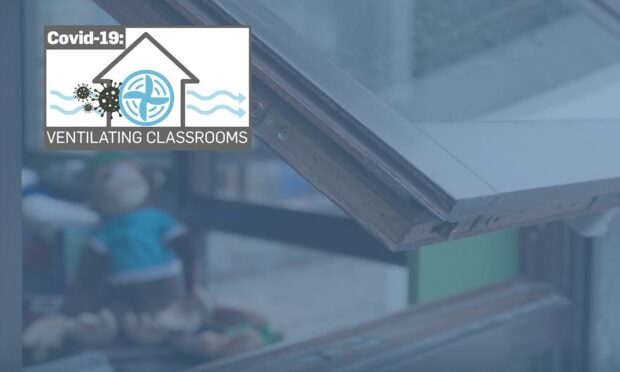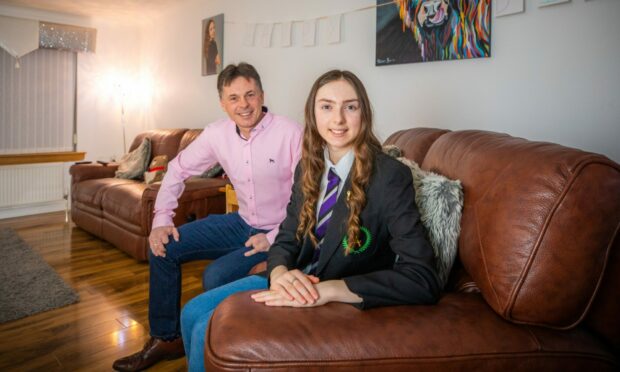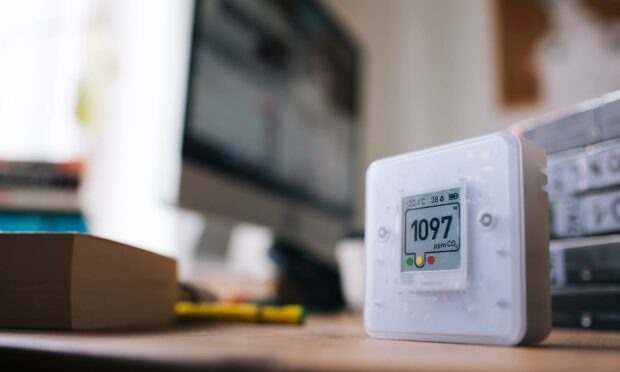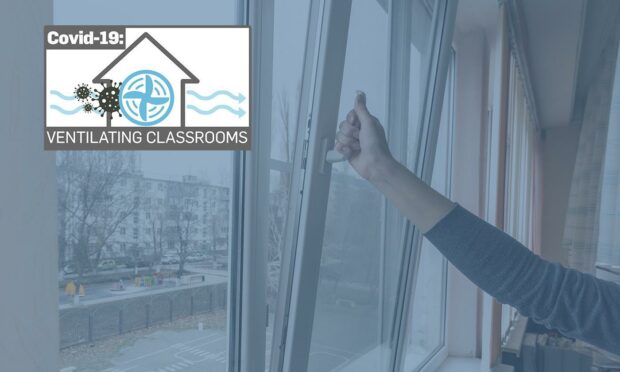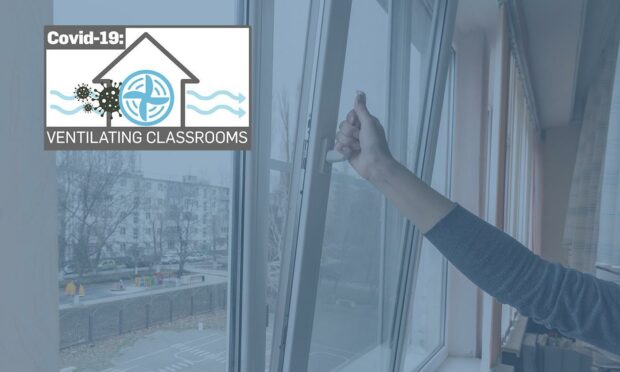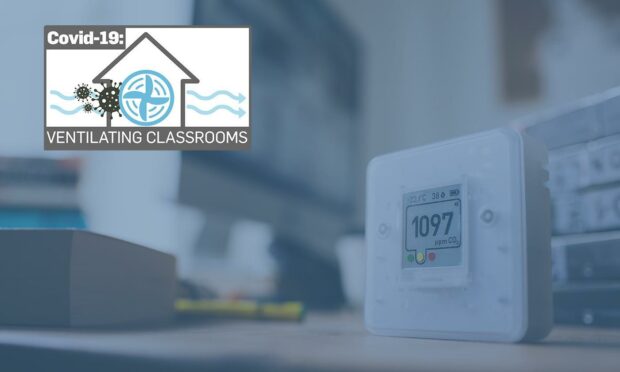Last winter pupils like Rhiannon Grant wore coats in the classroom as the pandemic meant windows were kept open.
This winter it’s likely the Levenmouth Academy S4 pupil and schoolchildren across Fife and Tayside will again need to layer up, with good ventilation seen as a key method of reducing the risk of Covid-19 infection.
Thousands of CO2 monitors have been distributed to schools in Angus, Dundee, Fife and Perthshire to show teachers when more fresh air is needed to prevent a potential build-up of airborne droplets if someone is infected.
But how will the devices be used to protect pupils like 15-year-old Rhiannon? And will they help schools to strike a better balance between staying safe and staying warm?
Rhiannon’s dad Phil Grant, who is chair of Levenmouth Academy’s parent council, said: “It was pretty cool last year in the classrooms.
“The priority was safety, but they let them wear their coats if they needed.”
Good communication from the school was, he said, key and he hopes that many senior pupils, like Rhiannon, will also have had their vaccination to give further protection.
By the end of last term Levenmouth Academy had 100 CO2 monitors for its classrooms, according to Fife Council, roughly one for every 16 pupils.
Why is ventilation so important?
Cases of Covid-19 among schoolchildren peaked during September.
Viruses, including Covid-19, can spread through the air but allowing clean air to pass through a space reduces transmission risk.
A build-up of carbon dioxide breathed out shows when ventilation is poor, and when this happens CO2 monitors will turn red.
The primary means of getting fresh air in most schools is opening doors and windows.
But one CO2 monitor distributor, Analox Group, claims the devices will help teachers keep classrooms warm as well as safer this winter by showing them when less as well as more ventilation is needed.
Becca Dodds, group business development manager, said its device gives teaching staff invaluable data on air so they can act quickly to improve the ventilation when needed.
She added: “It also provides reassurance in areas that existing ventilation measures are working and the environment is safe for the team and the students.”
Will school CO2 monitors help?
Although Fife Council says only 2% of school CO2 monitors have indicated ventilation issues, the local branch of teaching union EIS puts it at one in three.
Fife EIS spokesman David Farmer welcomed the purchase of more than 1,000 extra monitors for the region’s schools, but said the union would like to see a hard-wired monitor in every classroom.
Training in their use, is vital, he said and added: “Fife EIS will be monitoring training for using the monitors and the collection of data.
“We already know, for example, that 66% of the monitors have not turned red. This indicates that teachers are using the monitor effectively to inform ventilation.
It’s about striking a balance between safety and comfort and not having to be sitting in our classrooms with our jackets and hats on to keep warm.”
David Farmer, EIS Fife
“We also know that there is a correlation between weather conditions and levels of CO2. Readings appear to be higher on calm days.
“Winter and ventilation is something we still have to face. That and other factors like CO2 levels and the number of students in any one teaching space will be something we will continue to monitor.”
He added: “It’s about striking a balance between safety and comfort and not having to be sitting in our classrooms with our jackets and hats on to keep warm.”
Schoolchildren and teachers wrapping up in jackets and hats as classroom windows remained open was outside the coldest part of last winter, pointed out Dundee’s EIS spokesman David Baxter.
In January and February schools were closed to most and pupils learned from home as the country went back into lockdown.
Temperatures plunging during the depths of winter and rising fuel prices will be new challenges this winter, Mr Baxter said.
“How do you keep buildings ventilated and heated?
“We are seeing rising fuel costs. How are all the councils going to be able to afford this?
“This time last year the mitigations were opening the windows and making sure there was air flowing. The radiators were all turned up.”
Temperatures falling below required levels was a problem “essentially we didn’t face”, he said.
